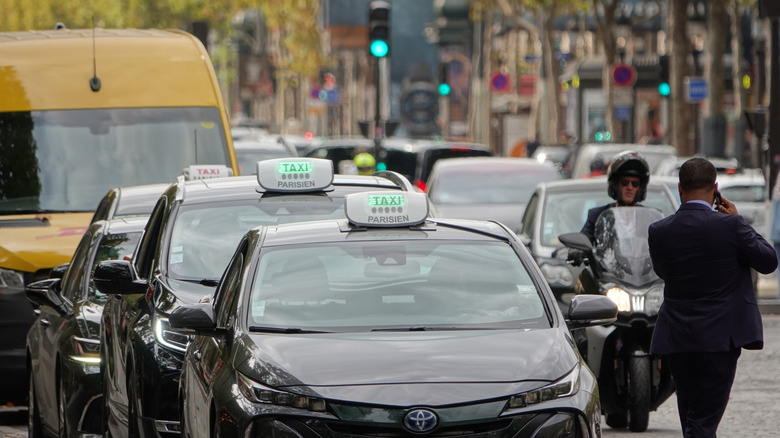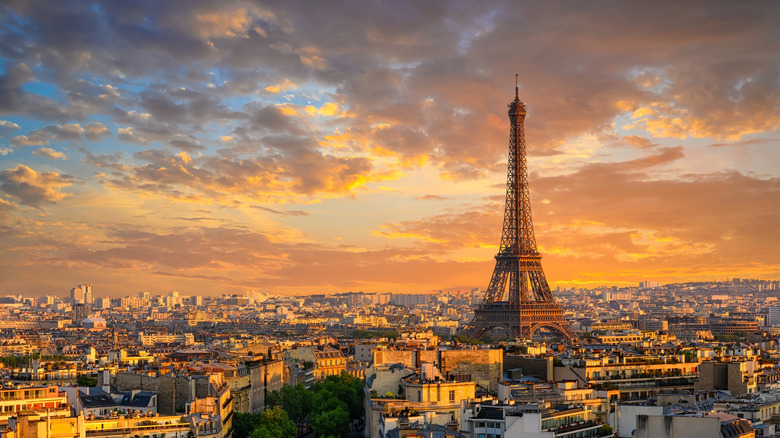Why Tourists Visiting Paris Might Want To Completely Avoid Taxis (And The Best Way To Get Around)
It is no secret that Paris is one of the world's most popular tourist destinations. The City of Lights saw an average of 15 million international visitors in 2023. That number likely increased the following year due to the city hosting the 2024 Summer Olympics. There is no confusion as to why Paris is such an appealing tourist attraction. From its iconic structures, luxury hotels, legendary fine dining and wine, haute fashion, historic architecture, and world-famous art scene, the city is a travel lover's dream. However, as any travel enthusiast knows, there are many important factors to consider and research before embarking on any trip, especially an international excursion.
Along with the standard requirements, such as ensuring your passport is current, securing a visa if necessary, having travel insurance, confirming accommodations, and more, travelers should also consider their best options for getting around once they have arrived at their destination. In Paris, one option many should avoid is a taxi. There are many reasons why Parisian taxis aren't worth utilizing, including the difficulty of getting one. Traffic is often congested in the city, making it a challenge to get a taxi. Once you have found one, getting to your destination is just as rough. Finally, there is a strong likelihood that your taxi driver will overcharge, particularly if they can tell you are not a local. The wiser option for using public transportation to navigate the city is via the metro system, especially as train rides across many European cities can be surprisingly cheap.
The Paris metro service is the fastest and cheapest option for getting around
As one of the oldest and largest train systems in Europe, the Paris Metro can seem a bit daunting at first. Once you get a handle on it, it is one of the most cost-efficient, not to mention fastest, options for getting around the city. For first-time travelers, the most important factors to note about the Paris Metro are that it has five main zones and two main types of Metrocards – a ticket or a pass. Metro tickets are applicable for single rides, and metro passes can be used for multiple train rides and are valid for extended stays.
Most applicable to visitors, particularly first-time visitors, is that there is also the option of a tourist pass that comes in three options — the Paris pass for unlimited rides to key tourist attractions, the Mobilis pass that allows unlimited rides to zones that you select, and the Paris Visite pass that is perfect for visiting families. The safest option for purchasing metro tickets or passes is at the station, either through the ticketing window or a ticketing vending machine. If you are a new visitor to Paris, consider downloading the RATP app, which is the primary body that oversees France's public transportation. Also, trains typically run from 5:30 a.m. to 1:15 a.m. local time, except Fridays and Saturdays, when it is extended to 2:15 a.m.
Walking, where possible, is the most economical option. This is particularly true in Paris, which has evolved into a highly walkable city with pedestrianized zones. So, the next time you're in Paris, head to a metro station, stop at one of the most tourist-friendly areas, and walk around to capture all the magic and beauty of the city.

